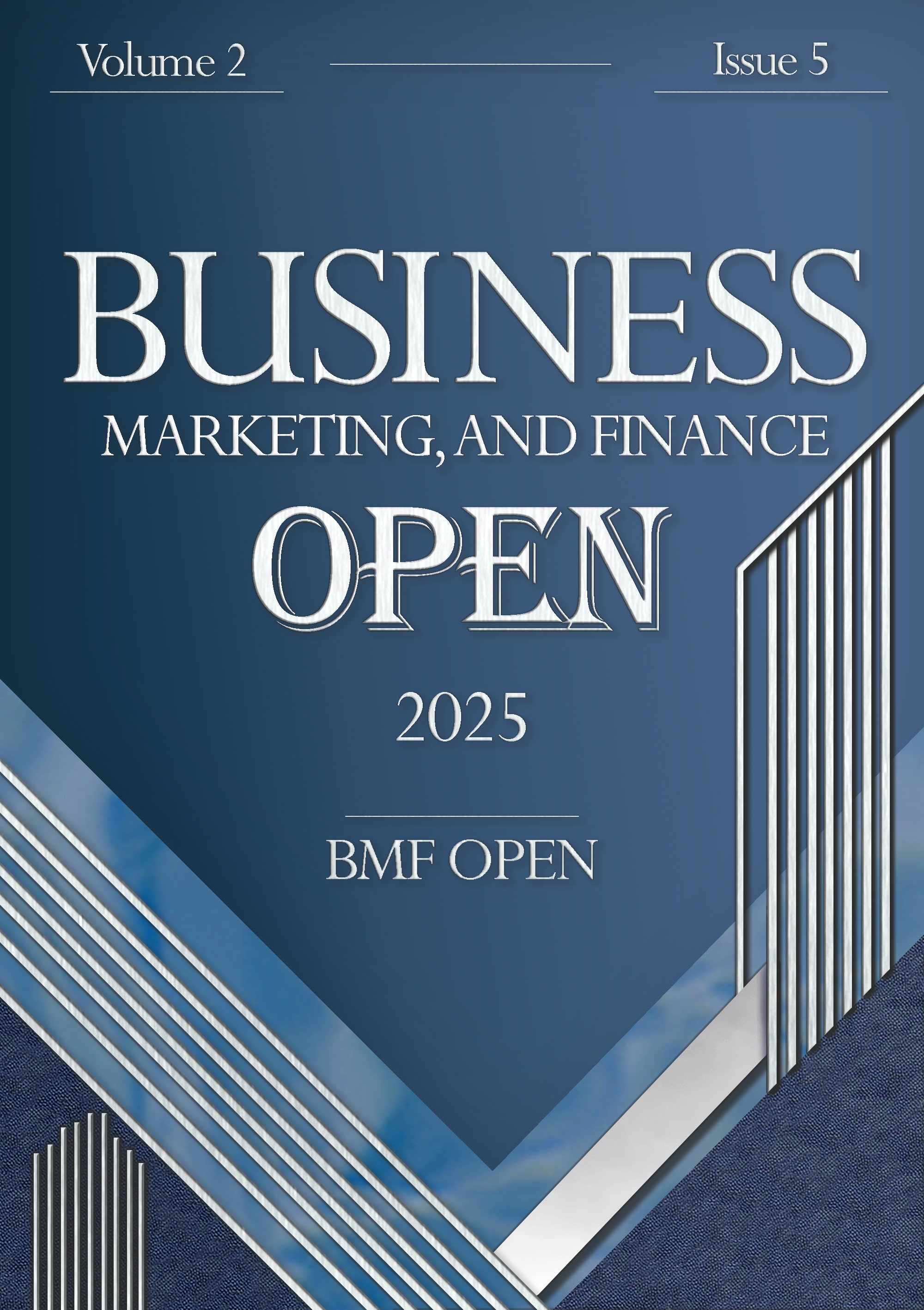Regression Model Analysis of Risky Behaviors and Board Characteristics on Bank Performance Using Profit Frontier Approach in Banks Listed on the Tehran Stock Exchange
Keywords:
corporate governance, board of directors, credit risk, banking efficiency, profit frontier model, Tehran Stock ExchangeAbstract
This study aims to analyze the impact of risky behaviors and board characteristics on the performance of banks listed on the Tehran Stock Exchange using the profit frontier approach. This applied study used panel data from all listed banks in Tehran Stock Exchange between 2014 and 2023. The dependent variable, bank performance, was estimated through a stochastic frontier model using a Cobb-Douglas production function. Independent variables included credit, liquidity, and operational risks, as well as board-related variables such as size, independence, ownership, tenure, education, gender diversity, and CEO duality. Fixed-effects panel regression models were estimated using EViews software. Results of the first model indicated that only board independence had a significant positive effect on bank performance. Other structural board characteristics were not statistically significant. In the second model, risky behaviors had a significant negative effect on performance, while none of the interaction terms between risk and board features showed a significant effect. These findings suggest that internal governance mechanisms alone may not be sufficient to mitigate risky behavior in banks. Effective risk management in the banking sector requires synergy between internal governance structures, external supervision, and regulatory instruments. Board independence remains one of the few variables significantly improving bank performance in Iran's risk-intensive banking environment.
References
V. Babić, Ј. Nikolić, and M. Šimić, "Board Structure and Bank Performance: Evidence From Serbian Banking Sector," Facta Universitatis Series Economics and Organization, p. 057, 2020, doi: 10.22190/fueo191006005b.
M. Mayur and P. Saravanan, "Performance Implications of Board Size, Composition and Activity: Empirical Evidence From the Indian Banking Sector," Corporate Governance, vol. 17, no. 3, pp. 466-489, 2017, doi: 10.1108/cg-03-2016-0058.
s. belhaj and C. Mateus, "Corporate Governance Impact on Bank Performance Evidence From Europe," Corporate Ownership and Control, vol. 13, no. 4, pp. 583-597, 2016, doi: 10.22495/cocv13i4c4p8.
J. Ariandhini, "Pengaruh Corporate Governance Terhadap Profitabilitas Bank Umum Syariah (BUS) Indonesia Periode 2011-2016," Falah Jurnal Ekonomi Syariah, vol. 4, no. 1, p. 98, 2019, doi: 10.22219/jes.v4i1.8742.
A. R. Aleemi, I. Uddin, and M. Kashif, "Competitive Conditions and Banking Stability in Pakistan: New Evidence From Market Power and Charter Value," South Asian Journal of Management Sciences, vol. 16, no. 1, pp. 20-38, 2022, doi: 10.21621/sajms.2022161.02.
B. Setiyono and A. Tarazi, "Does the Presence of Institutional Investors in Family Banks Affect Profitability and Risk? Evidence From an Emerging Market," SSRN Electronic Journal, 2014, doi: 10.2139/ssrn.2513862.
K. Puławska, "Effect of Introduction of German and Hungarian Bank Levies on Banks’ Risk-Taking Behavior," Journal of Banking and Financial Economics, vol. 2023, no. 1(19), pp. 1-25, 2023, doi: 10.7172/2353-6845.jbfe.2023.1.1.
M. A. H. Purbayanto, T. Faturohman, Y. Yulianti, and A. Aliludin, "Do Islamic Banks in Indonesia Take Excessive Risk in Their Financing Activities?," Journal of Islamic Monetary Economics and Finance, vol. 8, no. 1, pp. 149-160, 2022, doi: 10.21098/jimf.v8i1.1431.
E. D’Apolito, A. P. Iannuzzi, S. S. Labini, and E. Sica, "Sustainable Compensation and Performance: An Empirical Analysis of European Banks," Journal of Financial Management Markets and Institutions, vol. 07, no. 01, p. 1940004, 2019, doi: 10.1142/s2282717x19400048.
A. Albrecht, M. Glendening, K. Kim, and R. Pereira, "Auditor Going Concern Opinions and Bank Systemic Risk: Evidence From the 2007–2009 Financial Crisis," Auditing a Journal of Practice & Theory, vol. 39, no. 3, pp. 1-28, 2020, doi: 10.2308/ajpt-17-126.
M. M. Rahman, C. Zheng, and B. N. Ashraf, "Bank Size, Risk-Taking and Capital Regulation in Bangladesh," Eurasian Journal of Business and Economics, vol. 8, no. 15, pp. 95-114, 2015, doi: 10.17015/ejbe.2015.015.05.
A. Schindele and A. Szczesny, "The Impact of Basel II on the Debt Costs of German SMEs," Journal of Business Economics, vol. 86, no. 3, pp. 197-227, 2015, doi: 10.1007/s11573-015-0775-3.
A. Hakim and E. Thalassinos, "Risk Sharing, Macro-Prudential Policy and Welfare in an Overlapping Generations Model (OLG) Economy," European Research Studies Journal, vol. XXIV, no. Issue 4B, pp. 585-611, 2021, doi: 10.35808/ersj/2677.
H. Seta and H. Inoué, "On Bank’s Risk Incentives Under Deposit Insurance System," International Journal of Financial Engineering, vol. 06, no. 04, p. 1950039, 2019, doi: 10.1142/s2424786319500397.
K. Pernell and J. Jung, "Rethinking Moral Hazard: Government Protection and Bank Risk-Taking," Socio-Economic Review, vol. 22, no. 2, pp. 625-653, 2023, doi: 10.1093/ser/mwad050.
M. Fischer, C. Hainz, J. Rocholl, and S. Steffen, "Government Guarantees and Bank Risk Taking Incentives," SSRN Electronic Journal, 2014, doi: 10.2139/ssrn.2394607.
S. P. Lazar and A. Raviv, "The Risk Spiral: The Effects of Bank Capital and Diversification on Risk Taking," International Review of Financial Analysis, vol. 65, p. 101388, 2019, doi: 10.1016/j.irfa.2019.101388.
C. Memmel, A. Seymen, and M. Teichert, "Banks’ Interest Rate Risk and Search for Yield: A Theoretical Rationale and Some Empirical Evidence," German Economic Review, vol. 19, no. 3, pp. 330-350, 2018, doi: 10.1111/geer.12131.
L. Vigneron and R. Benkraiem, "Does Banking Relationship Configuration Affect the Risk-Taking Behavior of French SMEs?," Economics and Business Letters, vol. 4, no. 4, p. 166, 2015, doi: 10.17811/ebl.4.4.2015.166-174.
M. Wau, "Financial Risk, Corporate Governance, and Financial Performance: An Empirical Study on Bank Indonesia," Jurnal Akuntansi Keuangan Dan Bisnis, vol. 16, no. 2, pp. 179-188, 2023, doi: 10.35143/jakb.v16i2.6139.
T. Z. Opati, "Employing Artificial Intelligence and Algorithms in the Digital Lending Industry," pp. 43-70, 2020, doi: 10.4018/978-1-7998-2398-8.ch003.
E. Riupassa, "Impact of Accounting Information Systems, Work Motivation, and Internal Controls on Employee Performance: A Study at PT. Bank Danamon, Ambon Branch," Journal of Corporate Governance Insurance and Risk Management, vol. 10, no. 2, pp. 118-124, 2023, doi: 10.56578/jcgirm100202.
M. Béatriz, J. Coffinet, and T. Nicolas, "Relationship Lending and SMEs’ Funding Costs Over the Cycle: Why Diversification of Borrowing Matters," SSRN Electronic Journal, 2018, doi: 10.2139/ssrn.3308440.
J. v. Wilsem and L. Paulissen, "‘Moral Hazard’ Onder Slachtoffers Van Identiteitsfraude? De Relatie Tussen Schadevergoeding Bij Onterechte Bankafschrijvingen en Riskant Internetgedrag," Proces, vol. 94, no. 2, 2015, doi: 10.5553/proces/016500762015094002006.
G. I. Temba, P. S. Kasoga, and C. M. Keregero, "Impact of the quality of credit risk management practices on financial performance of commercial banks in Tanzania," SN Business & Economics, vol. 4, no. 3, p. 38, 2024, doi: 10.1007/s43546-024-00636-3.
O. K. Natufe and E. I. Evbayiro-Osagie, "Credit risk management and the financial performance of deposit money banks: some new evidence," Journal of Risk and Financial Management, vol. 16, no. 7, p. 302, 2023, doi: 10.3390/jrfm16070302.
M. Nizamuddin, "Impact of Environmental, Social, and Governance Risk on the Financial Performance of Selected Indian Banks," Eatp, pp. 6354-6364, 2024, doi: 10.53555/kuey.v30i5.3944.
Downloads
Published
Submitted
Revised
Accepted
Issue
Section
License
Copyright (c) 2025 Mohsen Ghalandarnejad (Author); Bizhan Abedini; Khosro Moradi Shahdadi (Author)

This work is licensed under a Creative Commons Attribution-NonCommercial 4.0 International License.







